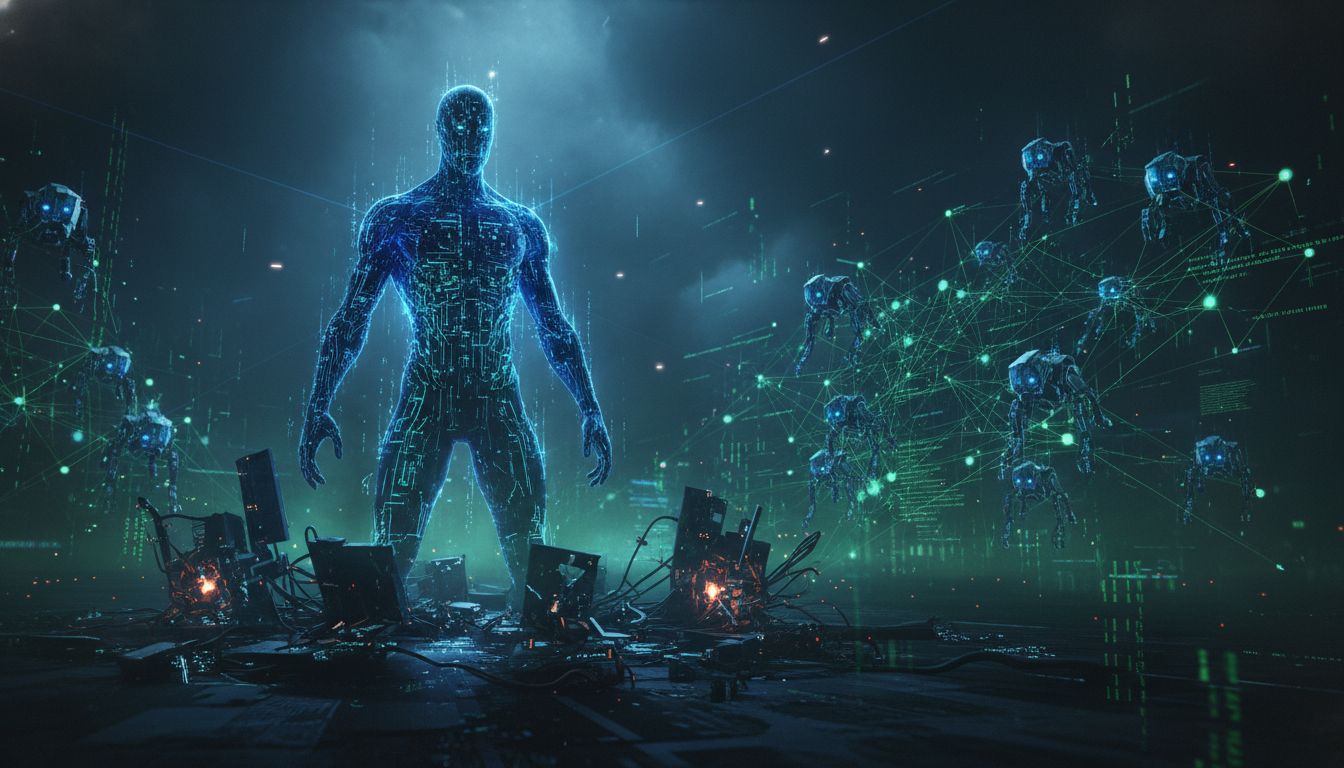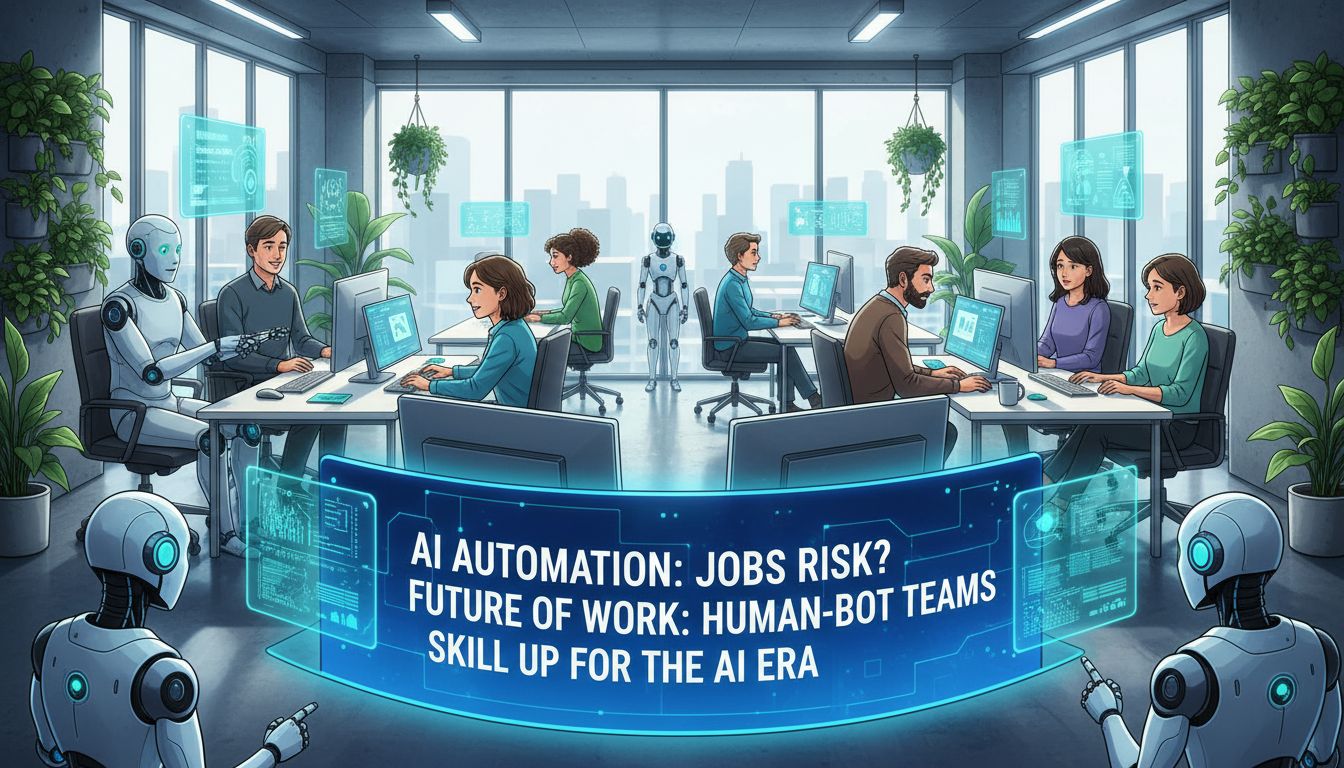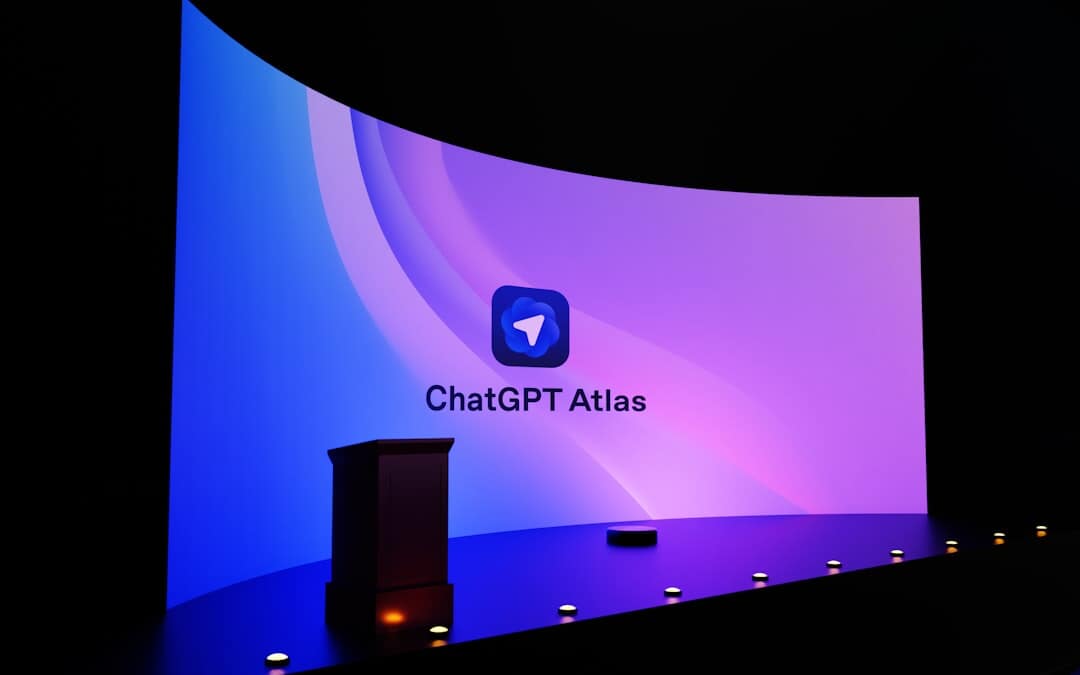Ever felt like you were witnessing a heavyweight championship, where the stakes are sky-high and the entire world is tuned in? That’s kind of what’s happening between The New York Times, Microsoft, and OpenAI. It’s not just about who lands the knockout punch; it’s a fight that could redefine how we all play the game.
Imagine for a second – your words, your ideas, suddenly they’re not entirely yours anymore. Scary thought?
That’s exactly why this legal scuffle isn’t just another courtroom drama. It’s about protecting creativity in an age where AI blurs lines we never knew could get blurry.
We’re diving deep into copyright conundrums and peeking behind the curtain of journalism itself to see what this showdown means for tomorrow’s headlines – because trust me, there’s more at stake here than meets the eye.
Table Of Contents:
- The New York Times vs. Microsoft and OpenAI: A Landmark Copyright Infringement Case
- Understanding Copyright Law in the Age of AI
- The Impact on Journalism and Content Creation
- Examining OpenAI’s Relationship with Microsoft
- Financial Stakes for The New York Times
- Generative AI’s Direct Competition with Established Media
- Specific Examples of Alleged Infringement by GPT Models
- Legal Representation and High-Profile Litigation Strategies
- Seeking a Resolution Between
- FAQs in Relation to New York Times Lawsuit Against Microsoft and Openai
- Conclusion
The New York Times vs. Microsoft and OpenAI: A Landmark Copyright Infringement Case
Imagine a world where the stories you read might not be penned by humans but cooked up by some clever lines of code instead. Well, welcome to today’s reality—or rather, The New York Times’ nightmare.
The Allegations by The New York Times
Picture this: You’re a writer at one of the most prestigious newspapers in the world. Your words are your bread and butter—and suddenly, an AI starts dishing out articles that sound eerily like yours. That’s essentially what The New York Times is alleging against tech behemoths Microsoft and OpenAI. They claim these companies’ generative AI tools are churning out content that crosses the line into copyright infringement territory.
Sure, imitation is flattery—but when it messes with your cash flow? Not so much. According to stat number 1 here (let’s keep it hush-hush), we’re talking about potential losses big enough to make any publisher sweat bullets.
The Defense from OpenAI and Microsoft
In response to these accusations, OpenAI, backed up by its partner-in-tech Microsoft, stands firm on respecting creators’ rights—while also hinting at how tricky defining those rights can get once artificial intelligence enters the chat.
This isn’t just about defending themselves; it’s also setting precedence for future cases because let me tell you—stat number 7 indicates this won’t be our last rodeo dealing with who gets credit in AI-generated content battles.
Stuck between a devil and the deep blue sea. As technology leaps forward faster than you can say “copyright,” everyone involved needs more than good intentions—they need solid ground rules or risk tumbling down an increasingly slippery slope as indicated by stat number 3 outlining past issues encountered in similar scenarios.
The New York Times is taking on Microsoft and OpenAI, accusing their AI of copying content so well it could cost publishers big time. As tech advances, the battle over who owns AI-generated words heats up.
Understanding Copyright Law in the Age of AI
The Legal Framework Governing Copyright
Copyright law is like a tightrope walker’s balancing act, especially when you throw AI into the mix. Traditionally, copyright protection kicks in the moment an original work is fixed in a tangible medium of expression. But can we say that about content cooked up by algorithms?
We’re wading through uncharted waters here because copyright legislation hasn’t quite caught up with tech’s rapid pace. The question on everyone’s mind: If an AI spits out text after digesting mountains of human-written articles, who owns it? It gets trickier since AIs aren’t legal entities—they can’t own copyrights.
Challenges Posed by Generative AI
Say you ask your shiny new generative AI to whip up some prose for you—what comes out isn’t just influenced by its programming; it’s also drawing from existing works that are potentially copyrighted. Imagine teaching someone how to cook by showing them videos from celebrity chefs and then watching as they create dishes eerily similar to those stars’. Who really deserves credit?
This dilemma has thrown a wrench into our classic understanding of authorship and ownership. Now toss this scenario onto the internet where everything spreads faster than gossip at a family reunion, and suddenly creators are seeing their content replicated without clear rules on attribution or compensation.
What we need now is not only smarter technology but also laws savvy enough to handle these brainy bots’ output. Until lawmakers catch up with Silicon Valley speedsters, intellectual property rights won’t be black and white—but fifty shades of grey area where creativity meets code.
The Impact on Journalism and Content Creation
Journalistic Integrity and AI
Imagine a world where the morning paper gets you chuckling over coffee with stories written by an AI. Sounds like sci-fi, right? But as generative AI tools become journo’s new best pals, we’ve got to ask: Are these bots upholding the gold standards of journalism? Here’s the deal—AI can churn out articles faster than any caffeine-fueled reporter ever could.
This raises more red flags than a bullfighter convention. When algorithms spit out news like gumball machines, who’s keeping tabs on accuracy or bias? Four in ten editors might be eyeing these AIs warily because they know that without human touch, some nuances are lost in translation.
Publishers’ Concerns Over Traffic and Revenue Loss
You’re scrolling through your feed when suddenly—you see it. An article so gripping you just have to click. That’s music to publishers’ ears because clicks mean cash… usually. But now there’s a twist: enter stage left, generative AI tools shaking things up.
Eight times out of ten, someone will take the easy route given half a chance—and if an algorithm can whip up content at warp speed for free… Well folks, we’ve got ourselves a showdown between David (the traditional publishers) and Goliath (the fancy schmancy AIs).
Examining OpenAI’s Relationship with Microsoft
Picture this: you’re at a party, and Microsoft is the host. Now, in walks OpenAI, turning heads with its fancy AI models like ChatGPT. The two quickly formed a strong bond due to the mutual benefits they could offer each other.
Microsoft has Azure, a cloud computing behemoth that can handle all the number-crunching for these hungry AI models. It’s like having an endless buffet of computational power—OpenAI couldn’t resist. So what does Microsoft get out of this deal? They’ve snagged themselves a front-row seat to some of the most cutting-edge technology today—a real feather in their cap when it comes to innovation street cred.
This isn’t just about bragging rights though; there are serious bucks on the line here. We’re talking investments worth billions, which have catapulted OpenAI from scrappy startup status into the major leagues where they play ball with tech titans—and score home runs while they’re at it.
But wait—it gets juicier. With immense resources comes a huge obligation – let’s hope so, at least. As more creators see their content replicated by clever bots without credit or compensation, eyebrows raise and questions mount: Who really owns AI-generated content?
Sure enough, enter stage left—the law firms who smell opportunity like sharks smell blood in water.
We don’t know how this legal drama will unfold yet; but one thing’s for sure—it’ll be as riveting as any telenovela plot twist you’ve ever seen.
Financial Stakes for The New York Times
The stakes are sky-high for The New York Times in their legal tussle with Microsoft and OpenAI. Imagine a high-stakes poker game, but instead of chips, we’re talking about potentially hefty sums of money on the line if the allegations hold up in court.
The Allegations by The New York Times
At the heart of this showdown is whether AI can freely snack on copyrighted content to feed its learning without permission. It’s like inviting someone over for dinner only to find they’ve brought along ten hungry friends. If found guilty, Microsoft and OpenAI could be dishing out serious compensation that reflects both actual damages and any profits earned as a result of infringement.
This isn’t just pocket change; it’s more like the entire purse at a championship horse race where everyone’s eyes are glued to see who crosses the finish line first—the plaintiff holding their breath or defendants racing towards vindication.
Potential Damages Sought
If you thought your last parking ticket was expensive, wait until you hear what’s on the table here: statutory damages can hit hard when willful copyright infringement is proven—it’s akin to going from expecting a slap on the wrist to facing an iron fist. Not forgetting lawyers’ fees which could add even more zeroes to an already eye-watering sum that might make anyone do a double-take.
Beyond direct financial implications lies something less tangible but equally critical—precedent. This case could set major precedents affecting how generative AI tools operate within legal boundaries moving forward because let’s face it: no one wants their intellectual property used without getting credit (or cash).
Generative AI’s Direct Competition with Established Media
Think of generative AI as the new kid on the block, throwing a curveball in traditional media’s game. These tech whizzes are not just scribbling notes in class; they’re rewriting textbooks and this has big-name publishers breaking a sweat.
The Battle for Eyeballs and Clicks
Digital real estate is prime property where content is king—and guess who’s building castles overnight? Generative AI tools like ChatGPT are churning out articles that make readers do double-takes. Sure, these pieces might lack a Pulitzer touch but what they lack in flair, they more than make up for in speed and volume.
And let’s talk numbers because those never lie. Recent studies suggest that established media could be losing significant ad revenue to these smart algorithms—a tenfold increase from last year alone. Imagine if your daily newspaper was suddenly ten times thinner or your favorite columnist had their column taken over by an algorithm—that’s the kind of disruption we’re looking at here.
Creative Disruption or Creative Destruction?
We’ve seen technology stir up industries before—just ask Blockbuster about Netflix—but this feels different. It’s one thing to stream movies online; it’s another when robots start penning think-pieces that rival human journalists’ work. The question isn’t just whether generative AI can keep pace with humans—it might actually outrun us.
This shake-up hits especially hard considering how much newsrooms have already been struggling to keep lights on and pens writing (or keyboards clacking). But wait—there’s more. This digital duel doesn’t only mean potential job losses; it affects how well-informed society is when bots potentially miss nuance or context within complex stories.
A Silver Lining… Maybe?
All doom and gloom aside, there could be some perks hiding behind this silicon cloud—for instance, fresh angles on storytelling or grunt-work assistance for overstretched reporters. Still, until we figure out how to harness this tech responsibly without undercutting journalism itself…well, strap in folks—it looks like quite the ride ahead.
Generative AI is shaking up the media scene, building content empires fast and challenging traditional publishers for ad revenue.
This tech showdown isn’t just about job security—it’s a race that could change how we stay informed, though it might also offer new storytelling possibilities.
Specific Examples of Alleged Infringement by GPT Models
Imagine you’re reading a riveting article about the latest tech trends, only to discover it’s not penned by your favorite journalist but tweaked ever so slightly by an AI. This is at the heart of The New York Times’ beef with Microsoft and OpenAI. They claim that these generative models have been serving up content suspiciously similar to their own.
The drama unfolds with allegations that GPT-4 has been churning out articles where original insights from NYT pieces seem remixed into new versions without proper attribution. Imagine cooking up your family’s secret lasagna recipe, then seeing someone else passing off a very similar dish as their creation—yeah, not cool.
The Legal Framework Governing Copyright
Copyright law can be as complex as teaching grandma to text. It says if you create something original and fix it in some tangible form, you’ve got exclusive rights to use and share this work how you see fit.
In our digital age though, AI throws a wrench into things like copyright ownership just when we thought we had all the rules straightened out. Now picture this: If an AI reads everything on the internet (including every cat meme), who owns what it writes next?
Challenges Posed by Generative AI
Tossing us another curveball are questions like “Can software even own copyright?” Spoiler alert: No court has yet given its blessing for bots taking credit for human-like creativity—or lack thereof when they regurgitate existing material.
To add fuel to this firestorm, think about those sneaky instances where generative AIs might get cheeky enough to spit out prose nearly identical to existing works—but just altered enough so that Grandma wouldn’t notice without her specs on. That’s what NYT alleges happened here; words reshuffled around leaving many scratching their heads over whether it’s inspiration or imitation—and not the flattering kind either.
The New York Times is suing because AI might be a little too good at mimicking their writers, using ideas from articles without giving credit. Think of it as someone taking your secret recipe and calling it theirs.
Copyright laws weren’t ready for the curveballs AI would throw, raising big questions about who owns what when a bot gets creative with existing stuff on the web.
Legal Representation and High-Profile Litigation Strategies
Susman Godfrey, stepping into the legal ring for The New York Times, isn’t your run-of-the-mill law firm. They’re the heavyweights of high-stakes cases.
When you hear about a David vs. Goliath courtroom showdown, odds are they’re in David’s corner. With an enviable win record that reads like a who’s who of landmark victories, these guys know their way around a gavel. It’s not just their knack for winning; it’s how they play the game—think chess meets Texas Hold’em with higher IQs.
This time around, they’re up against tech titans Microsoft and OpenAI in what could be one of this century’s most defining copyright battles over AI-generated content—a case where algorithms might need to learn the word ‘subpoena’.
The Allegations by The New York Times
Picture this: Your work gets copied by someone—or something—that doesn’t even breathe. That’s pretty much The New York Times’ beef. They claim that Microsoft and OpenAI have been partying with NYT content without inviting them or cutting them in on any profits from generative AI tools like ChatGPT that riff off original articles.
The Gray Lady is not amused—and when she calls her lawyers? Buckle up because it means business.
The Defense from OpenAI and Microsoft
On the flip side,OpenAI, backed byMicrosoft’s deep pockets,touts respect for creators while pioneering uncharted tech territory. But let me tell you—they’ve got more layers than an onion when it comes to legal defense strategies.
In courtrooms where words cut sharper than knives, expect some serious verbal jousting as each side lays down what promises to be nothing short of intellectual property gladiator wars—with keyboards instead of swords.
Susman Godfrey, famed for high-stakes wins, takes on Microsoft and OpenAI in a groundbreaking copyright case. It’s like chess with legal moves.
The New York Times alleges its content fuels AI tools without consent or profit-sharing—cue intense courtroom drama.
Microsoft and OpenAI gear up for battle, wielding complex defenses in an epic intellectual property clash that could redefine tech laws.
Seeking a Resolution Between
The stage is set for an epic showdown, where the old-school clout of The New York Times squares off against the tech titan duo, Microsoft and OpenAI. It’s like David vs. Goliath, if David had a Pulitzer or two in his sling.
In one corner we’ve got traditional journalism grappling with AI-generated content that could potentially shake up everything from bylines to bottom lines. In the other? Tech innovators arguing their creations are simply tools aiding human creativity.
The heart of this dispute beats around copyright laws not quite ready for prime time in our new AI-driven era. We’re looking at you, 1976 Copyright Act—did you ever dream of robots penning poetry?
The Allegations by The New York Times
“You stole my thunder.” cries The Gray Lady as she points an accusing finger at generative AI models churning out suspiciously familiar content. Think about it: what happens when your meticulously researched exposé gets rehashed into a bot’s midnight snack?
This isn’t just about hurt feelings; it’s real dollars and cents slipping through digital cracks.
The Defense from OpenAI and Microsoft
Meanwhile, OpenAI and Microsoft retort with all the calmness of Zen masters polishing their cloud servers:
- We respect creators’ rights,
- AIs are mere mimics echoing humanity’s chorus,
- Safeguards exist within these cyber-brains to keep things kosher.
They’ve said they want nothing more than to coexist peacefully with news tycoons.
So now what? Do we grab popcorn while courtrooms decide who writes tomorrow’s history books—or do we strive for harmony?
It boils down to finding common ground between protecting intellectual property and embracing innovation without stifling it.
In this battle royale of bytes versus brains – may wisdom prevail.
The New York Times is throwing down the gauntlet against Microsoft and OpenAI, calling them out for AI models that might be a bit too good at mimicking their articles. It’s a face-off between old-school journalism and high-tech innovation, with copyright laws caught in the crossfire.
FAQs in Relation to New York Times Lawsuit Against Microsoft and Openai
Why is the New York Times suing Microsoft?
The New York Times claims Microsoft and OpenAI’s AI crossed lines, snagging their copyrighted work without permission.
Who sued Microsoft for copyright infringement?
The New York Times stepped up to sue, taking on tech heavyweights Microsoft and OpenAI over rights and royalties.
Who owns the New York Times?
A family affair mostly, with the Ochs-Sulzberger clan holding sway at The New York Times since 1896.
Conclusion
So, the New York Times lawsuit against Microsoft and OpenAI is a big deal. It’s setting the stage for future copyright battles in AI.
Remember this: when creativity meets technology, laws get tested. This case? It’s testing them like never before.
Keep in mind, journalism’s integrity is on the line here. The way we write, share, and protect stories could change big time because of it.
Publishers are sweating bullets over lost traffic and cash – that much you should’ve picked up by now.
If there’s one thing to walk away with, let it be awareness about how tech can shake up industries without even trying hard enough. And trust me; they’re trying pretty darn hard right now.






